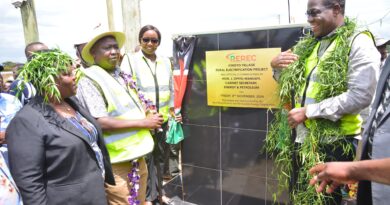Kenya Power connects 447,251 customers to electricity

Kenya Power connected 447,251 households and businesses with electricity in the year ended June 2024, helping increase its sales during the period.
This has increased the number of customers that the company now has to a record 9.7 million, inching the country a step closer to achieving its long-held goal of universal power access.
“This was supported by the availability of critical materials during the period and the subsequent deployment of a Rapid Results Initiative (RRI) in October 2023,” said Kenya Power.
Purchases from the new and existing customers as well as a strong shilling helped propel the company to a record profit after tax of Ksh30.08 billion.
This lifted the Nairobi Securities Exchange (NSE) listed company from a net loss of Ksh3.19 billion that it made in the year ended June 2023.
Kenya Power has been expanding its network and adding new customers to the grid by using its own money as well as funds from the government, donors and development finance institutions.
The company is currently implementing the Last Mile Connectivity Project on behalf of the government. The project is in its fifth phase and was introduced in 2013 by former President Uhuru Kenyatta.
Kenya Power in May signed 26 contracts for the fourth phase of the Last Mile Connectivity Project at a cost of Ksh27 billion. This will connect 280,000 customers to the grid.
The utility also further received a Ksh1.85 billion grant from the Japan International Cooperation Agency (JICA) connect 9,121 households in four counties to the grid.
In 2021, Kenya was ranked by the World Bank as the country with the fourth highest electricity access rate in continental Sub-Saharan Africa with an access rate of 76.5%.
Kenya was only beaten by Ghana, Eswatini and Gabon, even though the country’s ranking lowers when you include much smaller island nations of Cabo Verde, Seychelles, Mauritius and Comoros which have the highest rates in the region.
This sounds like a miracle, considering that in 2012, only 29% of Kenya’s population had access to electricity.
However, a downside of the rapid electrification programme has been that connecting millions of new customers in a short span of time without upgrading the underlying infrastructure such as transmission lines has overwhelmed the network.
This has led to increased incidences of major blackouts, affecting the security of energy supply in the country and thus hurting households and businesses alike.
info@theenergyreview.com
Discover more from THE ENERGY REVIEW
Subscribe to get the latest posts sent to your email.


